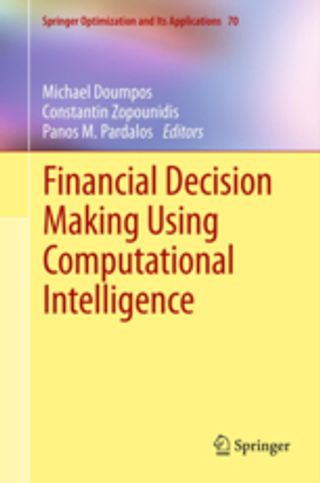Book
Financial Decision Making Using Computational Intelligence
Financial Decision Making Using Computational Intelligence covers all the recent developments in complex financial decision making through computational intelligence approaches. Computational intelligence has evolved rapidly in recent years and it is now one of the most active fields in operations research and computer science. The increasing complexity of financial problems and the enormous volume of financial data often make it difficult to apply traditional modeling and algorithmic procedures. In this context, the field of computational intelligence provides a wide range of useful techniques, including new modeling tools for decision making under risk and uncertainty, data mining techniques for analyzing complex data bases, and powerful algorithms for complex optimization problems.
